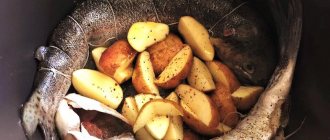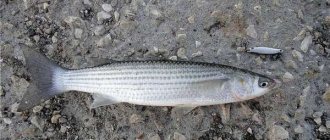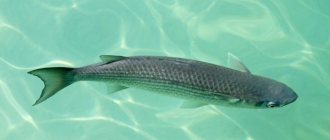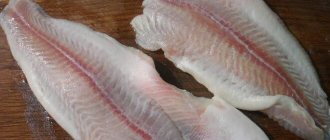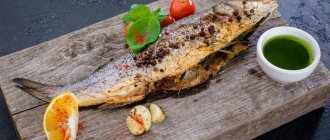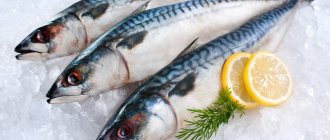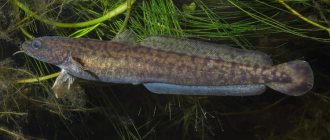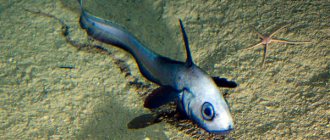Mullet is known in different countries. Pelengas is no less popular. Despite their close relationship, mullet and pelengas have significant differences.
What tastes better?
- Mullet 58%, 358 votes
358 votes 58%358 votes - 58% of all votes
- Pelengas 42%, 254 votes
254 votes 42%
254 votes - 42% of all votes
Total votes: 612
16.09.2019
×
You or from your IP have already voted.
Description of Loban fish
Loban belongs to the mullet family. Unlike most members of the family, mullet has a flatter and elongated body. The head has a flattened shape with a slightly pointed edge.
Due to its unusual color, another name for this species is black mullet. The belly of the fish is silver, the back is blue-gray, almost black. The fins of the fish are forked, and the scales have a noticeable length.
The officially registered maximum weight of the fish was 6 kilograms. The mullet can reach 90 centimeters in length.
Habitats
Such fish can be caught almost anywhere in the world: off the coast of Asia, Africa, South and North America, and of course Europe. Black mullet is rightfully considered one of the most common fish around the world.
As for Russia, this species is found in the Black, Okhotsk and Azov Seas, in the Amur River, in the Tatar Strait and in the Far East. Also, red mullet is actively grown in many estuaries and lagoons of the Krasnodar region.
Adult mule deer usually swim off the coast and can easily be found in bays, lagoons and lower reaches of rivers.
Pelengas sea or river fish
Pilengas is a schooling sea fish, but does not shy away from rivers. He feels as comfortable in fresh water as in the sea. With the onset of autumn, it swims into rivers. Capable of traveling tens of kilometers against the current. Winters in deep sections of rivers. In spring it returns to the sea again.
In numerous photos, the pilengas resembles a torpedo. Externally characterized by:
- massive frontal part;
- orange iris;
- large scales covering the body and head.
The scales have an even color with darkening towards the edges.
Spawns in late spring or early summer. For spawning, it chooses coastal areas of bays or shallow estuaries.
It feeds on bottom sediments, organic remains, small invertebrates and crustaceans. Large individuals are capable of eating small fish: anchovy, sprat or fry.
Fish is cautious. Reacts to noise and senses danger. There are known cases when the sawfish jumped over nets. Large specimens are capable of tearing the net with their sharp fins.
Nutrition
The black mullet is not a predator. The basis of fish nutrition is detritus and periphyton, that is, dead organic matter, which consists of the remains of worms and invertebrate insects, as well as plants. To a lesser extent, they feed on benthos, that is, living organisms.
The mullet scrapes the desired food from the bottom using its lower lip, which resembles a shovel, at an angle of 40-45⁰. Food collects on the gills, forming a lump, and when moving into the stomach, it is partially ground.
Meaning
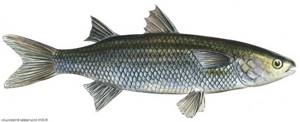
The mullet is a valuable commercial fish. In winter and during feeding, it accumulates in large flocks, often together with another type of mullet - mullet (Mugil sojui). This fish is caught using fixed and cast nets, vents, nets and other fishing gear.
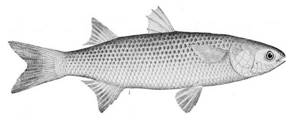
In winter, black mullet gather in schools.
In addition, this fish is of interest as an object of amateur and sport fishing. There are good prospects for commercial cultivation of this fish in the lagoons of Southern Primorye. Winters in the open sea.
If you find an error, please select a piece of text and press Ctrl+Enter.
Spawning
With a body length of 30-40 cm, the mullet reaches sexual maturity. During the spawning period, fish move away from the shores and gather in large schools, the formation of which depends on the size of the individuals.
The minimum number of eggs that are spawned by females is more than 2 thousand, the maximum is more than 7 thousand.
The spawning time frame for musk deer is May-early September, both in open and coastal waters.
Mullet fry, almost immediately after their appearance, swim to shallow water and remain there until late autumn.
Main differences
There are more than 17 species of mullet. In the basins of the Azov, Caspian and Black Seas there are 4 main species. The most famous and largest are mullet and pelengas. Singil and sharpnose are inferior to their counterparts in weight and size.
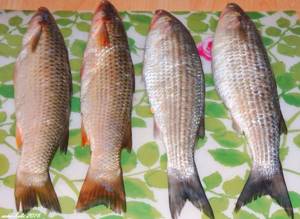
You can distinguish fish by:
- external signs;
- taste qualities;
- characteristics of habitat and spawning.
Bearing gas has several names. It is also called pilengas or belingas. The average size of an individual is 70-100 cm. The fish weighs 4-7 kg. Fishermen also came across large specimens. The weight was 12 kg, and the length reached one and a half meters. The weight of the mullet does not exceed 2-4 kg, and the size ranges from 50 to 70 cm.
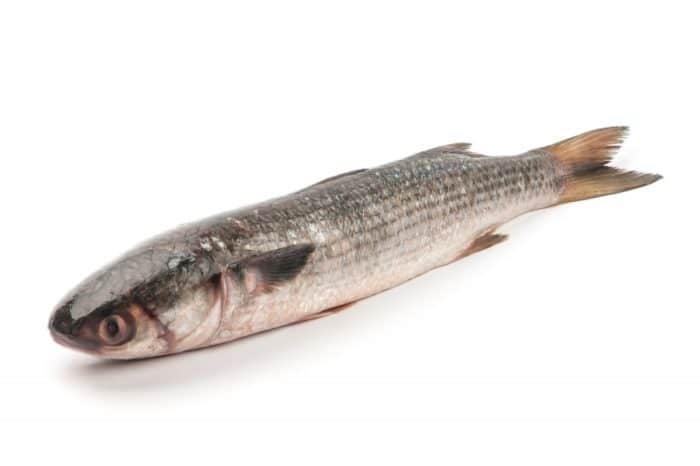
Fish differ not only in size. They can be distinguished by some external features. The front fin of the pelengas has a pointed shape. Located significantly lower than that of the mullet. If you compare photos of these fish, this feature clearly catches your eye.
You can distinguish mullet from pelengas by their scales. In mullet it is smaller and absent on the head. Pelengas is distinguished by large scales. Scales cover not only the body, but also the head. The mullet's eyes are blue, while those of the opponent are orange.
The difference between the two species lies in the methods of obtaining food. Pelengas feeds on bottom sediments. Mullet prefers to forage for food in the upper layers of the water column. This behavior is making adjustments to fisheries.
The taste qualities of mullet are recognized throughout the world. Tender, juicy meat serves as a source of nutrients and essential microelements. Both types taste similar. But there is a difference here too: Pilengas meat is somewhat sweeter. The calorie content, protein and fat content exceeds that of mullet. But they differ slightly.
What tastes better?
- Mullet 58%, 358 votes
358 votes 58%358 votes - 58% of all votes
- Pelengas 42%, 254 votes
254 votes 42%
254 votes - 42% of all votes
Total votes: 612
16.09.2019
×
You or from your IP have already voted.
The habitat of the sawfish has a wider range. The fish thrives in salt and fresh water. Mullet visits only sections of rivers adjacent to the sea, where the water has a salty taste.
Fishing tactics
You can catch red mullet using either a bottom or a float rod. The diameter of the fishing line used is 0.22 - 0.25 mm.
Best bait to use:
- Sea or dung worms;
- Small pieces of fish, crustaceans;
- Shellfish;
- Lures containing pheromones.
As for underwater hunting, this activity is quite interesting, since mullet is a cautious and agile fish. Often, representatives of this species follow the leader and swim in a flock, so knowledgeable hunters advise focusing their attention on an individual that has strayed from the flock. This specimen is slightly disoriented, so it will be easier to catch it.
You should swim to the whole flock, being as close to the bottom as possible.
You also need to know that when eating food, fish are divided into two groups: some eat, others protect.
When commercially fishing for black mullet, seines or tuzems are used. When using the second method, the catch can reach 5 tons.
Loban is very jumping and nimble. Thanks to the unusual shape of the body, it quite often escapes from nets.
In northern and western Russia, sporting competitions for mullet fishing are becoming very popular. Not only Russians, but also fishermen from abroad become participants in such competitions.
Mullet bait
Since fishing takes place mainly on the Black Sea coast, the most excellent component for baiting mullet will be nereis. This is a sea worm that can be found in the mud on the seashore, as it likes to hide in the depths of the muddy bottom. Store Nereis in cold water. Other good baits include shrimp, mussels, other small shellfish, and bread or meat.
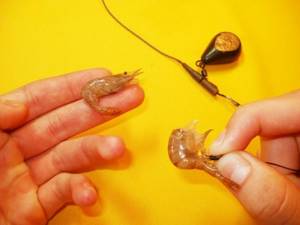
For fishing to be successful, feed the fishing spot 3-5 days before the main exit, so that the fish gets used to this place and remembers that you can eat tasty food here. This way you can keep the mullet in place. As mentioned above, add the same ingredients to the feeding mixture that you use as bait. You can add pieces of herring, processed cheese, and corn to the list of mullet’s favorite delicacies.
Recommendations from experienced anglers:
- After the first mullet catch, you need to keep it, so throw in a mixture of bread, meat and processed cheese;
- You can add a mixture of dough, processed cheese and sprat to the feeder;
- Also an excellent bait would be a mixture of bread, mussels and processed cheese.
Attention! After mixing the bait mixture, dip it in sea water for 3 minutes.
Mix the resulting mass of bait thoroughly again and form balls, which you then throw into the water. This way you can keep even a school of mullet in your fishing spot, rather than just individuals.
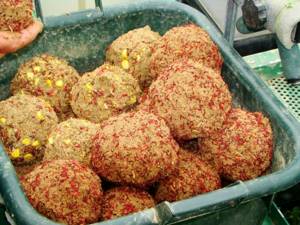
Now, having figured out what to use to catch mullet, you can be confident that you will taste incredibly tender and tasty mullet meat. Mullet is a common fish that has characteristics such as caution and shyness, but you can easily lure it onto your hook with tasty bait and bait mixtures that will attract it in any way. The Black Sea coast is rich in fish, so head to the seashore to catch an incredible mullet, which could be your first sea trophy.
The benefits and harms of lobana
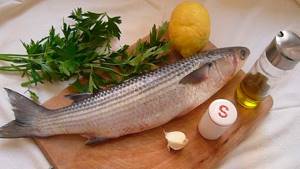
Loban is rich in beneficial substances that help improve human health. It is rich in protein, fatty acids, vitamins A, B, E, minerals such as chromium and phosphorus, as well as nickel and molybdenum.
It is also important that loban is low-calorie, that is, it is allowed when on various diets and if you are overweight.
Moreover, nutritionists believe that regular consumption of mullet several times a week helps improve immunity, reduces the likelihood of developing cancer and heart disease.
The only prohibition against eating loban is a person’s intolerance to fish products. If you have allergies, it is advisable to reduce the consumption of mullet. In other cases, it does not cause any harm to human health.
How to cook loban fish - the best recipes
We bring to your attention several delicious and, most importantly, healthy recipes, the main ingredient of which is black mullet.
Baked fish
To cook one fish you need to use:
- One medium sized mullet;
- 8 potatoes;
- 2 tomatoes;
- 1 onion;
- Half a lemon;
- 2 tbsp. spoons of vegetable oil;
- Spices (salt, ground black pepper);
- Bay leaf – 2 leaves;
- Paprika, curry – 1⁄2 teaspoon each.
Subsequence:
- Clean the mullet from fins, scales, and entrails. Rinse and dry with a napkin. Cut into pieces 1.5 cm thick.
- Season with spices and leave to marinate for 15 minutes.
- Peel and cut vegetables into rings.
- In order to bake fish you need a deep vessel. Place chopped potatoes in the first layer, then onions and tomatoes. Season each layer with salt or spices.
- Place marinated Loban on top. Spray with oil.
- If desired, you can cut the lemon into half rings and place it on the fish pieces, or simply squeeze out the juice of half a lemon.
- Cover the vessel with foil.
- Preheat the oven to 220.
- In this form, the dish should be cooked for 30 minutes.
- After this time, remove the foil and bake the fish for another 15-20 minutes.
Fried fish
For preparation you need to use:
- 500 grams of fillet;
- 2 tbsp. spoons of vegetable oil;
- 30 grams of flour;
- Spices;
- Greenery.
Subsequence:
- Clean the forehead from scales, fins, and entrails. Rinse, dry slightly with a napkin.
- Mix flour with spices and bread the fillet.
- Heat vegetable oil in a frying pan.
- Fry the fish on each side until golden brown.
- Place the finished dish on a plate, garnish with lemon slices and herbs.
Loban in foil
To prepare one medium-sized fish you need to use:
- One lemon;
- 1 tbsp. spoon of olive oil;
- Seasoning for fish;
- Spices to taste.
Subsequence:
- Clean the mullet from fins, scales, and entrails. Rinse and dry with a napkin.
- Sprinkle with salt, pepper and a mixture of spices, pour over oil and lemon juice.
- Cover with cling film and leave to marinate in the refrigerator for 20-30 minutes.
- Preheat the oven to 180-2000.
- Place the fish in foil.
- Bake for 15-20 minutes.
The dish can be served with boiled rice, fresh vegetables, and, of course, lemon juice.
We hope that this article was useful to you and you were able to get all the information you wanted about the fish called mullet.
